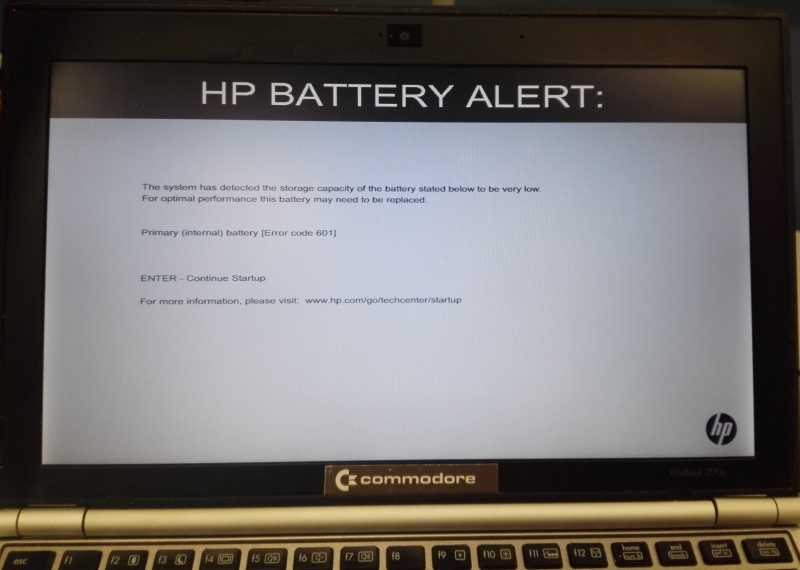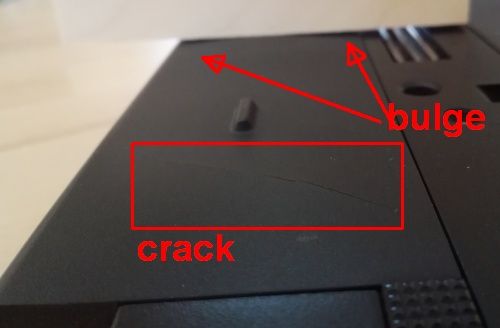Posted Wednesday, 08-Apr-2020 by Ingo Karkat
I must have been really lucky with the hardware I got on 02-Nov-2012: HP EliteBook 2170p, with 8 GB RAM and 168 GiB SSD. For one, it was the first available model with an SSD (a colleague chose the same model a few weeks earlier and still got a magnetic disk). And the small traveler notebook proved to be really robust and sturdy.
I first used the pre-installed Windows 7 (but shrunk the single big partition into a 48 GiB partition, then added another 48 GiB partition for potentially dual-booting Linux, and the remaining 71 GiB as a shared data partition). Three years later, I made the switch to Ubuntu 14.04 LTS; eight months later, I upgraded to 16.04 LTS, which I'm still using. (And sort-of been stuck with, as in the meantime, all disk partitions are more or less completely full, so I doubt I'd have the required free space for an upgrade.) During the switch, I repartitioned to a 32 GiB primary partition for the OS, 8 GiB swap, and the remainder for my home directory.
Because I still need a Windows OS for some applications, I ran a VirtualBox VM from an external 128 GB USB 3 stick, but the performance was really bad. I then quickly moved to an external 256 GB SSD in a USB drive enclosure; that was much better. However, after some time, I still encountered various problems, and finally moved the VM to the internal drive, moving some of my home directory to the root file system, and the data that I had stored on a 60 GiB VeraCrypt container to a USB thumb drive (making it fully mobile). That mostly works out; VM performance is great (well, within the limits of the system, allocating 3.5 GB RAM and 2 processor cores to it), and access to the thumb drive isn't fast, but acceptable for data that's rarely used. The thumb drive is draining battery, though, so if I keep the system in standby for more than one day, the battery will be depleted. The first one (SanDisk Ultra Fit 128 GB USB 3.1) lasted 2.6 years, the second one 14 months (I'm now using the third for 4.5 months); fortunately, both failed in a benign way: the first one suddenly got read-only, the second just got really slow.
Battery life was down to about 30-40 minutes, but as I use a docking station at work and have a second power supply at home, I just need enough juice to maintain standby while commuting, and occasionally for showing a few short YouTube videos at the dining table. With the Corona situation, my daughter did not go to school, and used another old notebook where the battery was already dead and gone, and that notebook has the same power supply connector as mine. This "resource conflict" caused me to completely drive down my notebook's battery one day. The operating system still sounded the low battery alert, but then it almost immediately went dead. After that, I was greeted by this screen on each startup:
 |
 |
I didn't think too much of that, as I already knew about the poor state of my battery, but could live with that, given my low mobility requirements. (Company split-offs and mergers, plus general measures of austerity had long derailed the corporate IT replacement processes, but everybody was expecting this to be lifted; after about three years without serious replacements, almost everybody was sitting on old hardware.) It's just that now the BIOS finally had also realized the state of the battery.
But then a few days later I first noticed two diagonal cracks on the bottom of the battery case (when I picked up the notebook to put it in my rucksack for the way home), and then also a bulge of about two millimeters. I immediately knew that that wasn't good, and some googling confirmed that the battery should not be used any longer.
So, here I am spending the final weeks (finally got the approval to order a new one, which will be a Dell Precision 5540) without battery, which means I need to shutdown and restart at least two times per day (for travel), and at home have to be very careful with the power connector (one abrupt move, and the screen goes black - happened two times already today).
I really liked this machine; it's been the right form factor, and has served me surprisingly well (and an unexpectedly long time)! At the beginning, there were some issues with a stuck power switch (corrected with pincers, and then learned that I must just softly swipe it to the side, but not push it in); I lost all rubber "feet" pretty soon (so it's been a bit slippery on a hard flat surface; gluing them back didn't work), the varnish is slowly peeling off, the left Ctrl key sometimes sticks a bit. Reorganizing and cleaning up disk space certainly wasn't cost-effective (ordering a bigger disk would have been a bureaucratic hassle, and I didn't want to pay for this out of my own pocket; I'd already funded the USB drives myself), but this way I tried out many configurations and learned a lot from it.
 |
The only thing that I really missed (and that I'm looking forward to getting back with my new machine) is the Tablet capabilities of my previous two convertibles. Though there are not many uses for turning around the screen and drawing on it with a pen, those few that I found were really great: Quick note-taking (less distracting than using the keyboard), sketching (much faster than using PowerPoint, and I also like the personal touch of a hand-drawn, imperfect diagram), and photo editing (using the mouse doesn't come close to the precision of a pen).
So, a big Thank You
to my dependable workhorse!
Ingo Karkat, 08-Apr-2020
ingo's blog is licensed under Attribution-ShareAlike 4.0 International